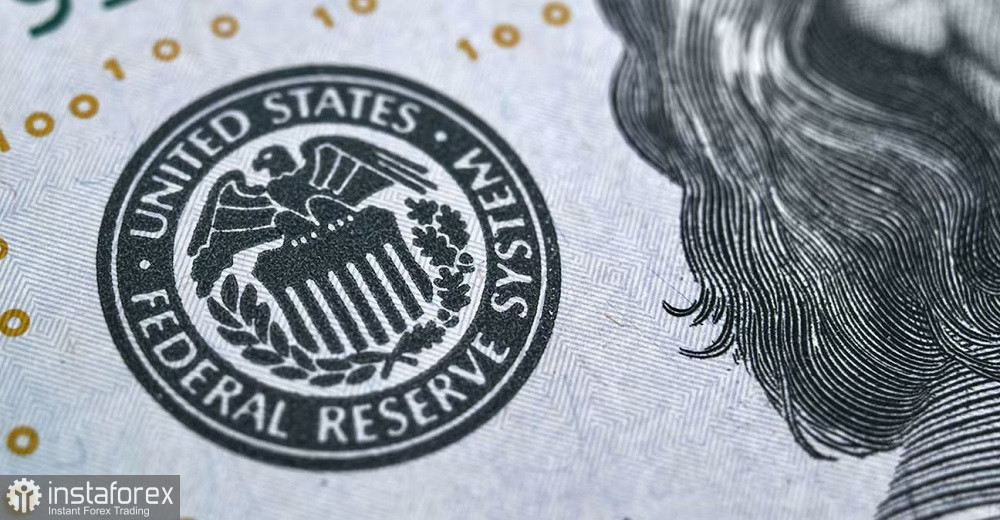The EUR/USD bears are testing the 8th figure again today in hopes of breaking through the 1.0860 support level (the lower line of the Bollinger Bands indicator, coinciding with the lower border of the Kumo cloud on the D1 timeframe). This week, the sellers of the pair have tried every day to secure below the target of 1.0900, but each time the price returns to its previous positions. Overall, the fundamental background favors the decline in EUR/USD, but a powerful downward surge requires a corresponding news trigger. In the absence of one, traders will continue to be in a clinch: sellers will try to pull the pair below 1.0860, while buyers will try to push it back above 1.0900.

Even yesterday's news trigger couldn't act as a catalyst. The minutes of the Fed's July meeting were hawkish but not convincing enough to trigger a dollar rally. Therefore, the reaction of EUR/USD traders was mixed: on the one hand, the pair updated its 6-week price low (1.0863), on the other hand, the bears failed to overcome the mentioned support level of 1.0860, let alone secure below this target.
Moreover, the "minutes" of the Fed really were on the side of the greenback. The published document stated that most Federal Reserve representatives noted "significant inflation risks," which may require further tightening of monetary policy parameters.
Recall that following the August meeting, the Federal Reserve raised the interest rate by 25 basis points, but did not maintain a combat spirit and did not hint (contrary to the expectations of many experts) transparently at further steps to tighten monetary policy. At the final press conference, Fed Chairman Jerome Powell stated that the September Fed meeting could end either with another rate hike or with the rate remaining at the current level. He emphasized that in the fall, the regulator will evaluate the entire set of macroeconomic data "with a particular focus on progress in inflation."
The minutes of the August meeting reflected this position but, at the same time, intensified the hawkish sentiment, as more hawkish language was used in the document relative to the accompanying statement (and Powell's rhetoric).
Actually, it's not just (not so much) about the formulations, as it is about understanding that the opinions of Committee members about whether to raise rates further have diverged. Such a split plays in favor of the dollar, especially against the backdrop of recent inflation reports published in the U.S. after the August meeting. After all, the green July core CPI and the Producer Price Index could strengthen the position of the hawkish wing of the Fed.
In the minutes, it is specifically noted that "some" members of the Committee were concerned about the persistent risks of a decline in economic activity and an increase in the unemployment rate. However, "most" of their colleagues still consider inflation to be the main risk, noting that economic activity has been stable and the labor market remains strong.
It is worth noting here that, in this case, every word carries significant weight, and in this context the term "most" is very significant.
Responding to the Fed's minutes, U.S. stock indices ended in the red on Wednesday, while the dollar strengthened its positions across the market, including against the euro. The Dow Jones index fell 0.50% to 34,765.74 points at the end of the session, the S&P 500 dropped 0.75% to 4,404.33 points, and the Nasdaq fell 1.15% to 13,474.628 points.
Note that most currency strategists still believe that the Federal Reserve's tightening of monetary policy is nearing its end. However, there are simultaneous concerns that, firstly, the regulator may once again raise the rate at the September or November meeting, and, secondly, the central bank will keep it at the reached level for a long time. Recall that at the end of July, several representatives of the Fed suggested the possibility of lowering the rate in early 2024. But judging by the tone of the rhetoric of the published minutes, this topic is not on the agenda.
According to the CME FedWatch Tool, the probability of raising the interest rate at the September meeting is currently 14%, at the November meeting – almost 40%. This indicates that the market has not revised its forecast estimates regarding the September prospects, but at the same time, has placed certain hopes on the November meeting.
Thus, the dollar has received another fundamental trump card. The Fed's minutes allowed sellers of EUR/USD to update the 6-week price low, but did not allow them to secure below the target of 1.0860 (the lower line of the Bollinger Bands indicator, coinciding with the lower border of the Kumo cloud on the D1 timeframe). This is a mandatory condition for opening short positions on the pair with a target of 1.0800. Longs should not be considered at the moment: buyers can only count on small and short-term corrective pullbacks of 20-40 points.
 English
English 
 Русский
Русский Bahasa Indonesia
Bahasa Indonesia Bahasa Malay
Bahasa Malay ไทย
ไทย Español
Español Deutsch
Deutsch Български
Български Français
Français Tiếng Việt
Tiếng Việt 中文
中文 বাংলা
বাংলা हिन्दी
हिन्दी Čeština
Čeština Українська
Українська Română
Română

